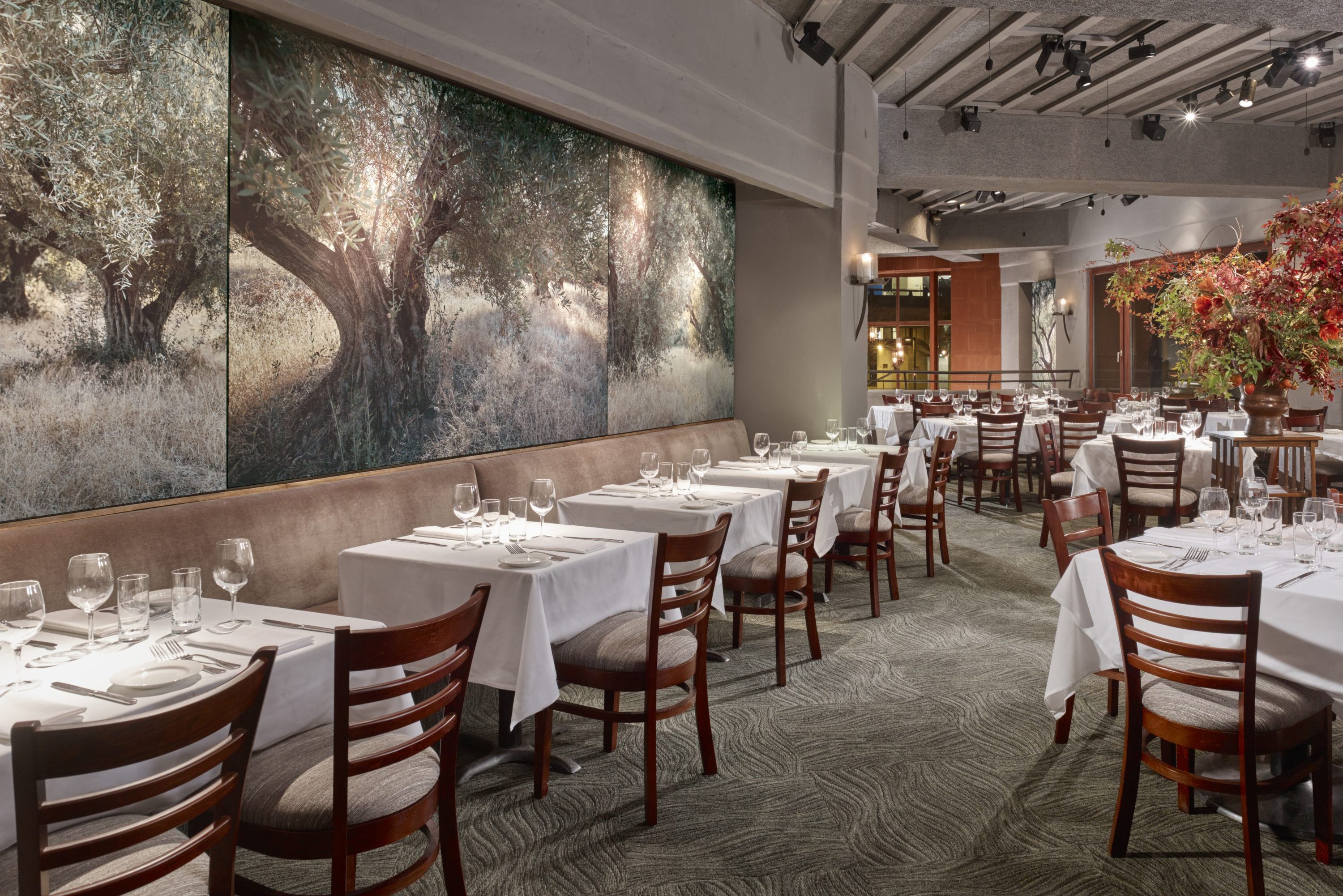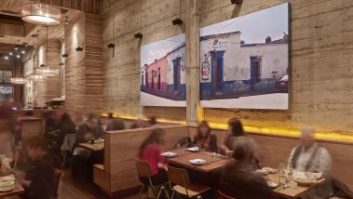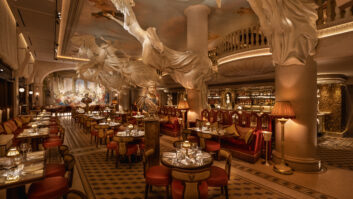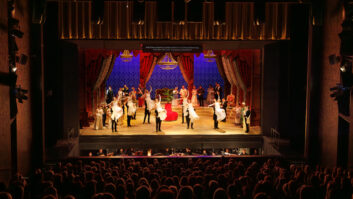
Restaurants have a difficult acoustic balancing act to perform, as they must be neither too noisy nor too quiet, Steve Montgomery looks at the options on the sound control menu.
There is a well-known maxim in the broadcast sector: to make the picture appear better, improve the quality of the sound. Similarly, diners in restaurants experience a more pleasurable and tastier meal in a better environment. Ambient noise plays a large part in setting that environment: a restaurant that is too loud will inhibit diners’ ability to communicate with each other. Conversely one that is too quiet can easily lack the all-important ‘atmosphere’.
In a report entitled Noise and its impact on the perception of food and drink, Charles Spence of the Crossmodal Research Laboratory, Department of Experimental Psychology, University of Oxford, found that: “The evidence now clearly demonstrates that both background noise and loud music can impair our ability to taste food and drink. It would appear that noise selectively impairs the ability to detect tastes such as sweet and sour while leaving certain other taste and flavour experiences relatively unaffected.”
Steve Ellison, applications director at Meyer Sound, is aware of the importance of controlling the acoustic environment. He points out: “Restaurants engage all five senses: sight, smell, taste, feel and sound. Careful attention to all these is needed to ensure the most memorable experience.” Restaurants present a unique set of acoustic challenges. He continues: “Owners want to maintain a sense of excitement and ‘buzz’ and to do this, surfaces such as the walls and ceilings are left untreated. Architects love the look of hard wood, bare concrete, and glass. When lightly occupied, rooms like this can feel great. Unfortunately, when full of diners you can end up with an uncomfortable noise level, and it can be difficult to have a conversation with someone sitting just across the table.”
On the other hand, if a restaurant has excessive absorption, such as carpeting, heavy curtains, and acoustic treatment on the ceiling, the room may lack life and energy and it may be too easy to hear other diners’ conversations. Some restaurant noise helps to create privacy between tables.
Physical acoustic treatment requires a compromise between intelligibility, noise level, and vibe
Steve Ellison, Meyer Sound
Seldom considered
With so much riding on the atmosphere created in a restaurant, attention should be paid to good sound management. However this is not generally the case: “Sound is rarely considered in the design process for restaurants, resulting in environments that are often simply not fit for purpose,” explains Julian Treasure, chairman of The Sound Agency. “This is true in many offices, shops, hospitals and schools, so the problem is widespread, although restaurants do have certain particular challenges. It’s hard to create a good sound in a room with bad acoustics. Modern architects and restaurant designers love hard surfaces – brick, stone, steel, glass – but all of these reflect back almost all the sound that hits them, making any room louder and less pleasant.
“Restaurants create more noise than most other locations, with a lot of metal tools, pans and devices. In the customer spaces there is air conditioning, coolers for drinks, ice makers, and coffee machines. Collectively these produce a noise floor before a single customer enters. On top of this noise floor is overlaid the noise of eating – cutlery, crockery and conversation – which gets louder and louder due to the Lombard effect: a spiral in which everyone speaks louder to be heard over everyone else, inevitably resulting in the whole room bellowing. Add to this the trend for open-plan spaces with no physical barrier between the kitchen and the diners, and you have a cacophony just waiting to happen.”
Acoustic treatment of the dining area is the starting point for any restaurant and can most easily be undertaken during the building of a restaurant or during refurbishments. Treasure’s advice is to “involve an acoustician right from the start and to think about the kind of environment you want to create. In particular, the ceiling and the floor: these are large surface areas that have a massive effect on the way a space sounds.”
Acoustic simulation and modelling aid the design process considerably, in deciding speaker layout and set-up, but are expensive to undertake and require that all the architectural components are identified and specified early in the process. Not all customers are willing to pay for this kind of approach.
Shape and size
Structure and shape of the restaurant area can have considerable impact. “Modern restaurant design tends toward minimalism with smooth clean surfaces and lines in rectangular shaped rooms with low ceilings,” explains Richard Vivian, managing director of Big Sky Acoustics. “This is often the worst possible design for controlling sound: smooth, parallel walls, hard, undressed tables and glass reflect sound and increase reverberation times. There is often little, or no, soft furnishing to absorb the sound and uncarpeted floors mean there is a reflective surface parallel to the ceiling as well as increased noise from furniture being moved across hard surfaces and footfall noise. Fortunately, there are some steps that can be taken to control sound reflection, such as breaking flat surfaces with three-dimensional features, avoiding parallel walls, and installing acoustic panels on walls and ceilings.”
Peter Kellet, director of Viba Sound, is very clear on one particularly critical aspect: “The most important element of restaurant design, one that no designers seem to understand, is that the ceiling should always be at least two layers of plasterboard.”
Sound-absorbing materials can also be applied flat surfaces; some of which are available as spray-on treatments. “We supply a range of acoustic decorative finishes that can be sprayed and trowelled to produce any surface finish from completely smooth to highly textured,” explains Ben Hancock, director of Oscar Acoustics. “Unless you have a particularly tall and narrow space, it is usually only necessary to apply the acoustic finishes to the ceiling, which also prevents damage to them.” These products are highly effective but do require specialist installation and application. Another company, Armstrong Ceilings, makes special acoustic ceiling products which, according to Treasure, look as good as they sound.
Picture: Nadia Andreini
www.bigskyacoustics.co.uk
www.meyersound.com
www.oscar-acoustics.co.uk
www.thesoundagency.com
www.vibasound.com







